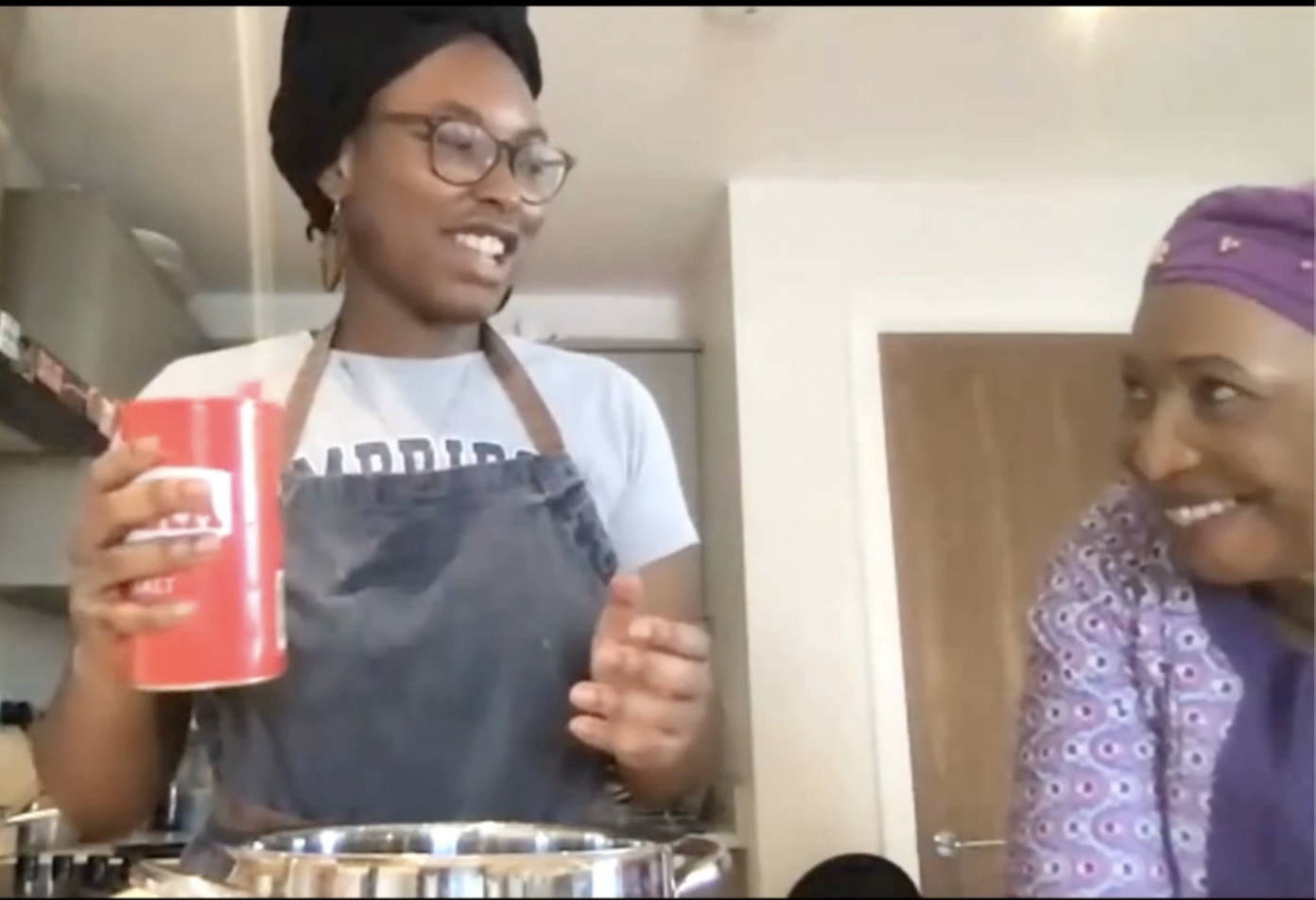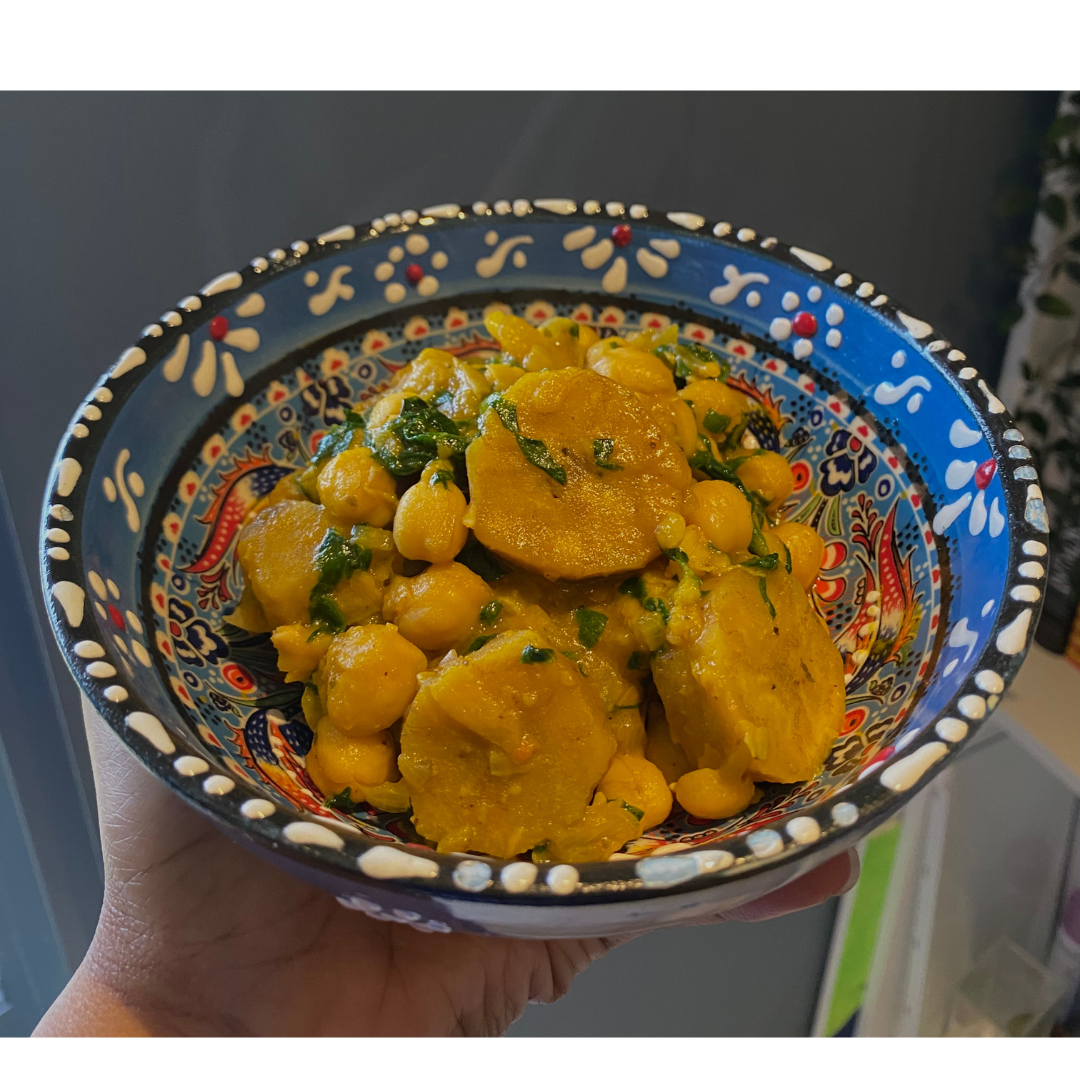Food is a multi-faceted tool. Not only is it essential for our survival, it can be described as a vehicle for helping us understand or formulate our individual and group identity. Through preparing, serving, and eating food, we are able to express and create connections that are instrumental in helping us develop our own identity and establish our identity within a group or community. In this blog post, I’d like to share a little of my own journey with language revitalisation and food.
Growing up in a multicultural and culinarily diverse country such as Nigeria, food as a big part of identity has certainly been my story. I was always surrounded by the sweet and tantalising aromas of my mother’s cooking that would envelop the entire house. As a child, I remember running straight to the kitchen when I could hear the pounding of pina beribá and boru with our wooden mortar and pestle. These ingredients would later transform into a soft pliable doughy texture that would be submerged in the most fragrant and rich soup, using your hands to pull it apart. This dish is synonymous with my childhood, and the joyous experience of a home-cooked meal that celebrated the ingredients indigenous to the Niger Delta region.
As I’ve been on my own journey of language reclamation, I’ve been examining the relationship between food and language and how that can be instrumental in the reclamation of the Izon language for myself and my family.
As part of this journey of language reclamation, I was afforded the opportunity during my ELP internship to host a Zoom cooking class with my grandma, through which she taught me how to make kekefịyàị, a dish that is integral to Izon cuisine.

This experience was incredible because not only was it an introduction to the master-apprentice method of language learning, but it was also a moment to share my culture with my fellow interns. In the course of the class, my grandma and I were able to teach the ELP team Izon cooking vocabulary such as “Fụ́” which means salt and “Ịmbele” which translates as delicious. The team also had the opportunity to ask my grandma questions about Izon culture and her experiences growing up as an Izon woman in Nigeria. Although we attempted to have the cooking session in Izon, there was never a feeling of disconnect between my grandma and I and the ELP team. It was so comforting to realise that food can be a unifying tool, crossing boundaries and borders, and paving new ways for conversation.
As someone who thinks food is not just a source of nutrition but a catalyst for language revitalisation, I am excited to see the ways in which I can continue to engage with food on an individual and communal level within the scope of language revitalisation.
What would a blog post about food be without a recipe? Here is how to make a vegan kekefịyàị, using my grandmother’s recipe.
Recipe: Vegan kekefịyàị
Ingredients
- 2 unripe plantains
- ½ white onion
- 2 tbsp of palm oil
- ½ tsp of dry pepper powder
- 1 can of chickpeas (we are using chickpeas to replace the seafood traditionally in kekefịyàị)
- 3 tsp of dried mushroom and nori powder
- 1½ cups of water
- 1 vegetable stock cube
Instructions
- Peel your plantain and slice diagonally or into circles and set aside.
- Chop/dice your white onion and set aside.
- Bring a medium-sized pot to your stove and pour in your water on medium/low heat.
- Add your sliced plantain and can of chickpeas.
- Then, add your white onion, palm oil, dry pepper, mushroom powder and vegetable stock cube.
- Add a pinch of salt to taste.
- Leave to cook with the lid partially on for about 25-30 minutes. At this point, the sauce should have thickened and the plantain should be soft and easy to cut through.
- Serve hot and enjoy!
